

Zitierweise / cite as:
Payer, Alois <1944 - >: Chronik Thailands = กาลานุกรมสยามประเทศไทย. -- Chronik B. E. 2470 / 1927-04 - 1928-03 (Rama VII.). -- Fassung vom 2017-01-11. -- URL: http://www.payer.de/thailandchronik/chronik1927-28.htm
Erstmals publiziert: 2013-10-14
Überarbeitungen: 2017-01-11 [Ergänzungen] ; 2016-02-19 [Ergänzungen] ; 2016-01-03 [Ergänzungen] ; 2015-10-11 [Ergänzungen] ; 2015-10-15 [Ergänzungen] ; 2015-06-23 [Ergänzungen] ; 2015-05-08 [Ergänzungen] ; 2015-04-04 [Ergänzungen] ; 2015-02-13 [Ergänzungen] ; 2015-01-26 [Ergänzungen] ; 2014-12-31 [Ergänzungen] ; 2014-11-07 [Ergänzungen] ; 2014-10-27 [Ergänzungen] ; 2014-03-31 [Ergänzungen] ; 2014-03-06 [Ergänzungen] ; 2014-01-01 [Ergänzungen] ; 2013-12-20 [Ergänzungen] ; 2013-12-05 [Ergänzungen] ; 2013-11-26 [Ergänzungen] ; 2013-11-18 [Ergänzungen]
©opyright: Dieser Text steht der Allgemeinheit zur Verfügung. Eine Verwertung in Publikationen, die über übliche Zitate hinausgeht, bedarf der ausdrücklichen Genehmigung des Herausgebers.
Dieser Text ist Teil der Abteilung
Thailand von
Tüpfli's Global Village Library
ช้างตายทั้งตัวเอาใบบัวปิดไม่มิด
|
Gewidmet meiner lieben Frau Margarete Payer die seit unserem ersten Besuch in Thailand 1974 mit mir die Liebe zu den und die Sorge um die Bewohner Thailands teilt. |
|
Bei thailändischen Statistiken muss man mit allen Fehlerquellen rechnen, die in folgendem Werk beschrieben sind:
Die Statistikdiagramme geben also meistens eher qualitative als korrekte quantitative Beziehungen wieder.
|
1927

Rama VII. schreibt auf Thai ein Memorandum über Demokratie.
Abb.: Memorandum
"DEMOCRACY IN SIAM The question whether a democratic form of government is suitable, or ever will be suitable, for Siam or not, has been discussed among the intelligentsia of Siam for a long time, and is even now being discussed by the semi-educated people, some of whom having aired their opinions in the Siamese press. The general consensus of opinion is that Siam is not at present ready to have a democratic form of government, but may have to adopt it at some distant date. Some people assert that parliamentary government will never be suitable for the Siamese people, giving as reason that it is only the Anglo-Saxons who have been able to made a success of that form of government.
There is no doubt that a democratic form of government requires a high degree of development of the people to be a real success. It is even possible that there must also be certain racial qualities (which the Anglo-Saxons possess to a high degree) if democratic institutions are to be really beneficial to the people as a whole and to be really and truly democratic, not only in form, but also in fact. Too many democracies are so only in form.
Now I am also inclined to think that a real democracy is very unlikely to succeed in Siam. It may even be harmful to the real interests of the people. One could readily imagine what a parliamentary form of government would be like in Siam, and there is no need to go into details. I shall just mention one fact, that is the parliament would be entirely dominated by the Chinese Party. One could exclude all Chinese from every political right; yet they will dominate the situation all the same, since they hold the hard cash.
Any party that does not depend on Chinese funds cannot succeed, so that politics in Siam will be dominated and dictated by the Chinese merchants. This is indeed a very probable eventuality. One could easily find many arguments to support the idea that Siam not to have a parliamentary form of government. This being the case, one may ask “Then why think about democracy at all? ” The answer is that one must remember that the majority of people do not think rationally, but think only sentimentally. This is particularly true of the crowd. There may come a time when the Siamese people will clamour for a parliament. (Are there not signs of that even now in Bangkok? ) It would be of no avail to explain, even with the best of reason, that a parliamentary government is not suited to the racial qualities of the Siamese! They will surely yell louder that they are being oppressed by a tyrannical ruling class, and there may be some trouble. (At the present moment I do not believe that there is any Siamese who would sacrifice his life for a political faith).
Perhaps some countries have adopted democracy merely as a necessity, knowing full well that it does not suit the character of the people. That is why there are countries who play at having parliaments. It seems to me that it is quite on the cards that we shall have to play that sort of game in Siam sometime. It is with these considerations in view that I am now considering certain reforms.
It seems to me that, if it is admitted that some day we may be forced to have some form of democracy in Siam, we must prepare ourselves for it gradually. We must learn and we must educate ourselves. We must learn and experiment so as to have an idea as to how a parliamentary government would work in Siam. We must try to educate the people to be politically conscious, to realize these [their? ] real interests so that they will not be misled by agitators or mere dreamers of Utopia. If we are to have a parliament, we must teach the people how to vote and how to elect representatives who will really have their interests at heart.The reorganization of the Privy Council is an attempt to carry out the first step of these ideas. It will be said that the Committee of the Privy Council as reorganized will not really represent public opinion
in general, and that as a body it will not really be representative of the interests of the people. This is, of course, quite true. It is firstly intended to be an experiment and an education in methods of parliamentary debate. I believe that the experience to be gained will be useful. The body may possibly reflect something of the general public opinion, and I do not think that it will be entirely useless. It is to be expected, however, that the creation of this body will not satisfy everybody, and that it will be variously criticized. (I do not believe that it is possible to do anything or organize anything without being destructively criticised by a certain section of the people in Siam).The next step in our education towards democracy would be the organization of municipalities. This will be a means of teaching the people how to vote, and the experiment would also prove useful and instructive. It will certainly be better for the people first to control local affairs before they attempt to control state affairs through a parliament. I sincerely believe that if reforms are gradually introduced in this way, a democratic form of government could possibly be introduced without too much harm. But the process must be very gradual and carefully administered in doses. If the experiments fail at every step, then it may be possible to persuade the people that democracy is not for Siam. The danger lies in impatience.
Another question which has also occupied the minds of all thinking men in Siam is the danger of unrestrained absolute power of the King. Absolute monarchy, like democracy, may become harmful at any time, because both principles rely on the perfection of human nature, a very frail thing to depend on. A sound democracy depends on the soundness of the people, and a benevolent absolute monarchy depends on the qualities of the King. It is unfortunately a fact that every dynasty, however brilliant, will sooner or later decay, and the danger of having some day a bad king is almost a certainty. I believe that every method has been tried so as always to obtain a good king on the throne, and every method has developed some flaw. The method of elected kings seems to be sound in principle; yet it produced some of the worst tyrants, i. e. some of the Caesars of Rome.
The alternative method used is to chance on having a bad king and make some institution that could control him.
This method also fails occasionally, as in the case of King Charles I of England, but on the whole it has worked fairly well.
I most earnestly desire to organize some institution which will serve to restrain any arbitrary or unwise actions of the King in Siam. (I presume that nobody will want to restrain his good actions? ) I feel that if I succeed in evolving something really useful, I would have done a great service to my country and the Dynasty.
The question is, what institution shall we organize now, admitting that the parliamentary system is impossible for the moment?
Perhaps the new Committee of the Privy Council could be made to serve that purpose in a small way? This is the reason why I think Mom Chao Sithiporn’s [สิทธิพร กฤดากร, 1883 - 1971] opinion is of some interest. I should like, however, to suggest a slight modification. A clause could be added to or after Article 13 saying that—‘If fifteen members of the kammakan ongkhamontri [กรรมการองคมนตรี] make a written request to the President of the Committee, asking the President to submit to His Majesty the King that certain matters are of importance for the general welfare of the country and the people, and that His Majesty should be graciously pleased to allow the matters to be discussed by the Committee, the President shall submit a petition to His Majesty, asking for a Royal sanction to hold a meeting to discuss the matters’. It is understood that the King may grant the permission to hold the meeting or not as he thinks fit. (It is the right of veto recognized by all democracies. The King can also dissolve parliament). I think that in this form, it is quite admissible and is much better than to grant a general right to a non-elected body to hold a meeting at any time. I believe that it will be able to fulfil its purpose of being a deterrent to those in power from acting arbitrarily or against the interests of the State. Anybody in power would hesitate to refuse such requests, unless he has very good reasons. Of course, a perfectly unscrupulous man may possible refuse the request. But then with such a man, no institution could prevent him from doing bad actions, not even a parliament (cf. Charles I), and the only thing to do then is to chop off his head!
Thus the formation of this Committee may possibly serve two useful purposes (however imperfectly): -
- As a means of experimenting and learning in methods of parliamentary debate.
- As a restraining influence against misuse of power.
Note: It should be noted that the English translation of ongkhamontri [องคมนตรี]as Privy Councillors is somewhat misleading, as our Privy Council, particularly as reorganized, will resemble the English Privy Council only in name. There is no intention of imitating the British Privy Council. We must try and evolve our own Political Institutions and not merely copy others. That is why I believe in making experiments."
[Übersetzung: Batson, Benjamin Arthur <1942 - >: The end of the absolute monarchy in Siam. -- Singapore : Oxford Univ. Pr., 1984. -- 349 S. : Ill. ; 22 cm. -- (Southeast Asia publications series ; no. 10). -- ISBN 0-19-582612-4. -- S. 303 - 307. -- Fair use]
1927

Es erscheint:
Siam from ancient to present times = สยามตั้งแต่ยุคดึกดำบรรพ์ถึงสมัยปัจจุบัน : a souvenir edition of the Siamese Kingdom Exhibition at Lumphini Park B.E. 2468 . -- [Bangkok] : สยามบรรณาคม, 2470 [= 1927]. -- 2 x 256 S. : Ill. ; 31 cm. -- Englisch and Thai auf gegenüberliegenden Seiten. -- Ein Souvenir für die nie stattgefundene Ausstellung, die Rama VI. für 1925 geplant hatte.
Abb.: EinbandtitelDarin erscheint eines der letzten Theaterstücke Rama's VI. Zitat daraus:
"Whatever has been initiated or accomplished by the King with good results the politicians who are Ministers and their parasites have appropriated the credit. Should any of their acts go wrong and they are to blame the Ministers and their parasites shrug their shoulders and say, "What can we do when the King chooses to listen to sycophants?" . .. The King is not a selfish man . . . His desire has always been to govern the people so that they should obtain as much happiness as possible. But, alas, gentlemen! the policies and ideals of the King are like frail craft launched on a troubled sea of foul rocks, so that some are driven ashore, and some are wrecked, being unable to get through. A great pity, is it not, gentlemen? But no one could have keener regrets on that account than the King himself." [Zitiert in: Greene, Stephen Lyon Wakeman: Absolute dreams : Thai government under Rama VI, 1910-1925. -- Bangkok : White Lotus, 1999. -- 224 S. ; 22 cm. -- ISBN 974-8434-69-9. -- S. 171]
Darin erscheint auch
Sithiporn Kridakara [สิทธิพร กฤดากร] <1883 - 1971>: Farm and home. -- Darin wirbt der Autor dafür, dass die gebildete Jugend Landwirtschaft als Alternative zur Beamtenlaufbahn sieht. Auch empfiehlt er, dass die Regierung die Diversifizierung der Landwirtschaft fördert. Der Artikel zirkuliert in Regierungskreisen. -- Eine Thaiübersetzung des Aufsatzes erscheint 1927-04 in der ersten Nummer der Zeitschrift กสิกร (Kasikorn = Der Bauer). Sithiporn will dort auch Stellungnahmen von Beamten dazu veröffentlichen, was ihm aber verweigert wird.
1927
Es erscheint:
Yai Suvaphan Sanitwongse = ใหญ่ สุวพันธุ์ สนิทวงศ์ <1863 - 1927>: The rice of Siam = เรื่องเข้าของประเทศสยาม. -- Bangkok : Bangkok Times, 1927. -- In Thai und Englisch
Abb.: Titelblatt
1927

Bericht Communist Intrigues in Siam:
"The 1927 report ‘Communist Intrigues in Siam’ claimed that Vajiravudh had ‘surrounded himself with "favourites" who misused their position to bleed the country’,
and that Prajadhipok
has made a clean sweep of these favourites who have now formed an anti-royalist party bitterly opposed to the Government. The Soviet Government, knowing it is doomed to fail in China, would be pleased if it could achieve the overthrow of an absolute monarchy in the Far East, even as small as Siam."
[Zitiert in: Batson, Benjamin Arthur <1942 - >: The end of the absolute monarchy in Siam. -- Singapore : Oxford Univ. Pr., 1984. -- 349 S. : Ill. ; 22 cm. -- (Southeast Asia publications series ; no. 10). -- ISBN 0-19-582612-4. -- S. 182, Anm. 26]
1927
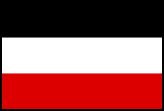
Siam erhält einen Geheimdienstbericht aus deutschen Quellen:
"A Siamese student, who imbibed Communism in England, has lately gone out to Bangkok, accompanied by an English Communist, to unite into one body the anti-dynastic party and the Communist emissaries from Canton who are working among the Chinese coolies. At the same time advantage is taken of any discontent among the Siamese students in England, France, and the United States, by sowing the seeds of revolt among them.... A Siamese of bad character, living in Marseilles, is the secret agent. He is well supplied with funds which his daughter brings at intervals from Germany through Switzerland." [Zitiert in: Batson, Benjamin Arthur <1942 - >: The end of the absolute monarchy in Siam. -- Singapore : Oxford Univ. Pr., 1984. -- 349 S. : Ill. ; 22 cm. -- (Southeast Asia publications series ; no. 10). -- ISBN 0-19-582612-4. -- S. 168]
1927

Es erscheint:
Trittel, Walter <1880 - 1948>: Die Töne des Siamesischen und ihre Wiedergabe in der siamesischen Schrift. -- In: Mitteilungen des Seminars für Orientalische Sprachen zu Berlin. Jg. 30 (1927), Abt. 1. -- S. 1 - 18
1927

Der deutsche Fotograf Emil Groote (1870 - 1948) kehrt nach Siam zurück, wo er schon 1904 - 1917 lebte. Nach der Revolution 1932 verlässt er Siam.
1927
Abb.: Kinder, Sonkhla / Singora (สงขลา), 1927
Abb.: Jungmänner, Sonkhla / Singora (สงขลา), 1927
Abb.: Lage von Sonkhla / Singora (สงขลา)
[Bildquelle: OpenStreetMap. -- Creative Commons Lizenz (Namensnennung, share alike)]
1927
Abb.: Schulbuben, Bangkok, 1927
1927
Abb.: Polizeistation Pai (ปาย), 1927
Abb.: Lage von Pai (ปาย)
[Bildquelle: OpenStreetMap. -- Creative Commons Lizenz (Namensnennung, share alike)]
1927
Abb.: Markt, Bangkok, 1927
1927

Abb.: Thot Kathin (ทอดกฐิน), Roi Et (ร้อยเอ็ด), 1927
Abb.: Lage von Roi Et (ร้อยเอ็ด)
[Bildquelle: CIA. -- Public domain]
1927
Siam bestimmt nun als autonomer Staat seine Zolltarife:
- die Einfuhr einiger unbedeutender Artikel zollfrei
- im Allgemeinen beträgt der Einfuhrzoll 5%
- auf Alkoholika werden 12% Einfuhrzoll erhoben
- alle Ausfuhrzölle werden aufgehoben
- alle Inlandszölle werden aufgehoben. Für Zinn und Teakholz bleiben sie allerdings unter dem Namen von Abgaben bestehen.
- der Export folgender Artikel ist verboten:
- Silbermünzen
- Drogen
- Kunstgegenstände
Aufgrund dieser Tarifreform erhöhen sich die Zolleinnahmen im ersten Jahr um 86%. Die Einnahmen aus Verbrauchssteuern erhöhen sich um 12%.
1927
Beginn des Baus des Suphan-River-Projekts (แม่น้ำสุพรรณ): Bau von 123 km Kanälen am so genannten teil des Tha Chin Flusses (แม่น้ำท่าจีน) in der Provinz Suphanburi (สุพรรณบุรี)
Abb.: Lage des Suphan-Flusses (แม่น้ำสุพรรณ)
[Bildquelle: Kmusser / Wikipedia. -- Creative Commons Lizenz (Namensnennung, share alike)]
1927
Pridi Phanomyong (ปรีดี พนมยงค์, 1900 - 1983) kehrt von seinem Studium in Frankreich nach Bangkok zurück. Er nennt sich Luang Pradit Manutharm (หลวงประดิษฐ์มนูธรรม - "von fesgegründeter Menschlichkeit"). Er baut heimlich eine Gruppe von ca. 50 Staatsbeamten auf, die die absolute Monarchie abschaffen wollen.
1918 - 1955

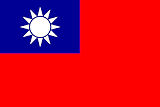
Einwanderung und Rückwanderung von Chinesen:
Abb.: Einwanderung und Rückwanderung von Chinesen (in Tausend), 1918 - 1955
[Datenquelle: Skinner (1957), S. 173]
1927
Erstes Einwanderungsgesetz: Jedermann kann nach Siam einwandern, wenn er eine Gesamtgebühr von 11,50 Baht bezahlt; ausgeschlossen sind nur Personen mit Trachom (โรคริดสีดวงตา).
Abb.: Trachom (โรคริดสีดวงตา)
[Bildquelle: WHO. -- Fair use]
Abb.: Lebenszyklus des Trachoms
[Bildquelle: Carter Center. -- Fair use]
1927

Temporäres Verbot der Siam Review, da sie einen Artikel über repräsentative Demokratie veröffentlichte, in dem angedeutet wird, dass nur Gewalt zu einer solchen führen kann. Dazu wird Siam mit dem zaristischen Russland verglichen.
1927

Ein britischer Agent namens Slater und ein Thai Agent namens Prayoon (ประยูร) werden nach Siam geschickt, um kommunistische Zellen aufzubauen.
1927

China: Auflösung der Ersten Einheitsfront (第一次国共合作) zwischen der Kommunistischen Partei Chinas (KPCh, 中國共產黨) und der Guomindang (中國國民黨).
"Erste Einheitsfront (chinesisch 第一次国共合作) ist die Bezeichnung für die erste Phase der Zusammenarbeit zwischen der Kommunistischen Partei Chinas (KPCh, 中國共產黨) und der Guomindang (中國國民黨) von 1923 bis 1927. Die Allianz kam auf Vermittlung der Komintern (Коммунистический интернационал - Коминтерн, 3-й Интернационал) zustande, die die GMD als bürgerlich-demokratische - und damit für chinesische Verhältnisse fortschrittliche - Partei ansah. Die Verhandlungen begannen Ende 1922 unter Vorsitz von Adolf Joffe (Адольф Абрамович Иоффе, 1883 - 1927). Im Ergebnis erhielt die GMD militärische Hilfe und Berater (z. B. Michail Borodin (Михаил Маркович Бородин, 1884 - 1951) und Wassili Blücher (Василий Константинович Блюхер, 1889 - 1938)) aus der Sowjetunion. Chiang Kai-shek (蔣介石, 1887 - 1975) wurde 1923 in die Sowjetunion geschickt, um die Parteiorganisation der KPdSU (Коммунистическая партия Советского Союза) zu studieren, und gründete nach seiner Rückkehr auf Anordnung von Sun Yat-sen (孫逸仙, 1866 - 1925) die Whampoa-Militärakademie ( 黃埔軍校). Die chinesischen Kommunisten ihrerseits konnten ihren Einfluss erheblich ausweiten, ihre Mitgliederzahl wuchs von 300 (1922) auf 58.000 (1927) und ihre Kader konnten wichtige Positionen einnehmen, z. B. Zhou Enlai ( 周恩來, 1898 - 1976) in der Whampoa-Militärakademie.
Allerdings sahen beide Parteien die Einheitsfront mehr oder weniger als Zweckbündnis an. Die Allianz zerbrach, als die Nordexpedition von 1927 Chiang Kai-shek (蔣介石, 1887 - 1975) in die Lage brachte, Unterstützung von den Industriellen in Shanghai und Nanjing zu erhalten und auf sowjetische Hilfe zu verzichten. Den anschließenden Kommunistenverfolgungen fielen mehrere tausend KPCh-Mitglieder zum Opfer. Zu einer gegen Japans aggressive Expansion in China gerichteten zweiten Einheitsfront (第二次国共合作) kam es 1936."
[Quelle: http://de.wikipedia.org/wiki/Erste_Einheitsfront. -- Zugriff am 2015-01-26]
1927

In Siam treten erstmals sino-vietnamesische Kommunisten in Erscheinung
1927
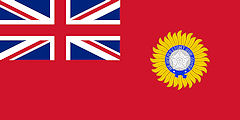
Der indische Grundstück-Spekulant A. E. Nana (นานา) gründet auf einem von ihm gestifteten die Indian Association, später umbenannt in India-Thai Chamber of Commerce (หอการค้าอินเดีย-ไทย)
Abb.: ®Logo
1927
Gründung von vier Filmproduktionsgesellschaften:
- Bangkok Pictures Company
- Borisad Tai Papayon Thai Company (บริษัทถ่ายภาพยนตร์ไทย)
- zwei chinesische Gesellschaften
1927 - 1949


Bürgerkrieg in China. Drei Regierungen beanspruchen die legitime Regierung ganz Chinas zu sein:
Regierung in Beijing (北京) unter Zhang Zuolin (張作霖, 1875 - 1928)
Regierung in Wuhan (武漢): linker Kuomintang (中國國民黨 ) und Kommunisten (中國共産黨)
- Regierung in Nanjing (南京) unter Chiang Kai-shek (蔣介石, 1887 - 1975)
Abb.: Lage von Beijing (北京), Wuhan (武漢) und Nanjing (南京)
[Bildquelle: CIA. -- Public domain]
Abb.: China 1928 - 1937
[Bildquelle: History Department of the US Military Academy West Point / Wikimedia. -- Public domain]
"The Chinese Civil War (1927-1949/1950) was a civil war fought between the Kuomintang (KMT or Chinese Nationalist Party, 中國國民黨), the governing party of the Republic of China, and the Communist Party of China (CPC) (中國共産黨, also known as CCP - Chinese Communist Party),[6] for the control of China which eventually led to China's division into two Chinas, Republic of China (ROC) and People's Republic of China (PRC). The war began in April 1927, amidst the Northern Expedition,[7], and essentially ended when major active battles ceased in 1949-1950. However there is debate on whether the war has officially ended. The conflict continues in the form of military threats and political and economic pressure, particularly over the political status of Taiwan. The continued tension is described in cross-Strait relations. The war represented an ideological split between the Nationalist KMT, and the Communist CPC. In mainland China today, the last three years of the war (1947–1949) are more commonly known as the War of Liberation. In Taiwan, the war was also known as the Counter-insurgency War against Communists (戡亂戰爭) before 1991.
The civil war continued intermittently until the Second Sino-Japanese War interrupted it, resulting in the two parties forming a Second United Front ( 第二次国共合作). Japan's campaign was defeated in 1945, marking the end of World War II, and China's full-scale civil war resumed in 1946. After a further four years, 1950 saw a cessation of major military hostilities—with the newly founded People's Republic of China controlling mainland China (including Hainan Island), and the Republic of China's jurisdiction being restricted to Taiwan, Penghu, Kinmen, Matsu and several outlying islands.
To this day, since no armistice or peace treaty has ever been signed, the PRC still actively claims Taiwan as part of its territory and continues military threats to Taiwan, the ROC also has mutual claim on mainland China, and both continues the fight over diplomatic recognition, there is debate on whether the Civil War has legally ended.[8] The war of weapons has given way to a war of words. Today, the war (such as it is) occurs on the political and economic fronts in the form of cross-Strait relations. The People's Republic threatens the ROC with a military invasion if the ROC officially declares independence for Taiwan by changing its name to and gaining international recognition as the Republic of Taiwan. Today, the de facto separate states on the two sides of the Taiwan strait have close economic ties.[9]"
[Quelle: http://en.wikipedia.org/wiki/Chinese_Civil_War. -- Zugriff am 2011-11-28]
1900 - 1940
Ausbau der Eisenbahn:
Ausbau (in km. eröffneter Strecken) und kumulative Baukosten (in Mio. Baht) der Eisenbahn, 1900 - 1940
[Datenquelle: Ingram (1971), S. 86]
1892 - 1941
Staatliche Investitionen in Eisenbahnen und Bewässerung
Abb.: Staatliche Investitionen in Eisenbahnen und Bewässerung 1892 - 1941 (in Mio. Baht)
[Datenquelle: Feeny, David <1948 - >: The political economy of productivity : Thai agricultural development 1880 - 1975. -- Vancouver : University of British Columbia Press, 1982. -- (Asian studies monographs ; 3). -- Zugl.: Diss. Univ. of Wisconsin-Madison. -- 238 S. ; 24 cm. -- S. 78]
1897 - 1938
Rendite der staatlichen Investitionen ins Eisenbahnwesen
Abb.: Jährliche Rendite der staatlichen Investitionen ins Eisenbahnwesen 1897 - 1938 (in Prozent des Kapitals)
[Datenquelle: Feeny, David <1948 - >: The political economy of productivity : Thai agricultural development 1880 - 1975. -- Vancouver : University of British Columbia Press, 1982. -- (Asian studies monographs ; 3). -- Zugl.: Diss. Univ. of Wisconsin-Madison. -- 238 S. ; 24 cm. -- S. 78]
1927

Abb.: Umzug mit König auf Elefant, 1927
1927
Es erscheint für eine kurze Zeit die Provinz-Zeitung
ศรีเชียงใหม่ (Srichiangmai)
"Sri Chiengmai reproduced stories from both the Thai- and English- language Bangkok press on events in Siam and around the world, but it also ran long articles on Northern Thai history and society. As might be expected, it put particular emphasis on the necessity of developing transportation and communications; politically it voiced strong support for Prajadhipok’s tentative efforts to foster representative institutions in Siam, and warned of the possible spread of ‘Bolshevik’ ideas to the North. The newspaper attributed its demise to the possible embarrassment its political activism might cause for its printers, an American missionary press." [Quelle: Batson, Benjamin Arthur <1942 - >: The end of the absolute monarchy in Siam. -- Singapore : Oxford Univ. Pr., 1984. -- 349 S. : Ill. ; 22 cm. -- (Southeast Asia publications series ; no. 10). -- ISBN 0-19-582612-4. -- S. 324, Anm. 8]
1927

Es erscheint:
Cravath, Paul D. (Paul Drennan) <1861 - 1940>: Notes on the cruise of Warrior in the Far East, 1927. -- Garden City, N.Y. : Country Life Press], 1927. -- 179 S. : Ill. ; 20 cm.
Abb.: Einbandtitel
"It is an open secret that the present ruling house reached the verge of disaster under the late king." [Zitiert in: Batson, Benjamin Arthur <1942 - >: The end of the absolute monarchy in Siam. -- Singapore : Oxford Univ. Pr., 1984. -- 349 S. : Ill. ; 22 cm. -- (Southeast Asia publications series ; no. 10). -- ISBN 0-19-582612-4. -- S. 14]
1927
Abb.: Maeklong Railway (ทางรถไฟสายแม่กลอง), 1927
Abb.: Linienführung der Maeklong Railway (ทางรถไฟสายแม่กลอง)
[Fair use]
1927

Die Töchter Sara und Chongdee des Sozialkritikers Narit Phasit (aka. Narin Klueng,1874-1950) werden Novizinnen, deswegen aber verhaftet, aus dem Orden ausgeschlossen, und für kurze Zeit inhaftiert. Daraufhin erklärt der Mönchsorden Frauenordination als illegal. Narin errichtet auch ein Nonnenkloster - ohne Erfolg.
1927
Erstmals werden 7 Frauen zum Studium an der Chulalongkorn University (จุฬาลงกรณ์มหาวิทยาลัย) zugelassen.
1927
Es erscheint ein offizielles Wörterbuch des Thai. Es ist der Vorgänger zum Royal Institute Dictionary (พจนานุกรม ฉบับราชบัณฑิตยสถาน) (1950)
1927

Eröffnung einer Niederlassung der französischen Bank Crédit foncier d’Indochine in Bangkok.
1927 - 1937


Kenneth Perry Landon (1903 - 1993) und seine Frau Margaret Landon (1903 - 1993) sind Missionare in Trang (ตรัง). Kenneth Landon ist 1942 - 1965 einer der höchsten Beamten in der Far East Section des US State Departement und beeinflusst die Thailand-Politik der USA entscheidend.
Abb.: Lage von Trang (ตรัง)
[Bildquelle: OpenStreetMap. -- Creative Commons Lizenz (Namensnennung, share alike)]
"Margaret Landon (* 7. September 1903 in Somers, Wisconsin, als Margaret Dorothea Mortenson; † 4. Dezember 1993 in Alexandria, Virginia) war eine US-amerikanische Schriftstellerin, die vor allem durch ihren Roman Anna und der König von Siam über das Leben von Anna Leonowens berühmt wurde. Sie war eine von drei Töchtern in einer streng gläubigen Methodistenfamilie. Diese zog dann nach Evanston, Illinois, wo sie die High School besuchte. 1925 machte sie ihren Abschluss auf dem Wheaton College (en) in Wheaton, Illinois. Sie unterrichtete ein Jahr lang und heiratete dann Kenneth Landon, den sie in Wheaton kennengelernt hatte. 1927 gingen beide als presbyterianische Missionare nach Thailand.
Landon hatte drei Kinder und leitete eine Missionarsschule in Trang (ตรัง). Sie las sehr viel über das Land und informierte sich über Anna Leonowens. Als die Familie 1937 nach Amerika zurückkehrte, begann sie zu schreiben. 1942 zog sie nach Washington, D.C., als ihr Mann sich entschloss, dem Staatsministerium als Südostasien-Berater beizutreten.
Ihr Roman über Leonowens wurde nach seiner Veröffentlichung 1944 sofort ein Bestseller. Eine spätere Arbeit über ihre eigenen Erfahrungen, Never Dies the Dream von 1949, hatte jedoch nicht annähernd so viel Erfolg."
[Quelle: http://de.wikipedia.org/wiki/Margaret_Landon. -- Zugriff am 2014-10-06]
1927

Der deutsche Chemiker Walter Bock erfindet den synthetischen Styrol-Butadien-Kautschuk. Er wird von der I. G. Farbenindustrie AG unter dem Namen "Buna" ab 1937 großtechnisch produziert. Damit ist das Deutsche Reich weitgehend unabhängig von Naturkautschuk.
Abb.: Gummi aus Kautschuk oder Buna, 1940
[Quelle: dhm. -- Fair use]
1927-04
Es erscheint die erste Nummer der Landwirtschaftszeitschrift
กสิกร (Kasikorn = Der Bauer) / hrsg. von Prinz [หม่อมเจ้า] Sithiporn Kridakara [สิทธิพร กฤดากร] <1883 - 1971>
"The early years in the 1920s at the Bangberd [บางเบิด] farm were devoted to research and experimentation with new crops and agricultural methods, but it was only with the appearance of the agricultural journal Kasikorn [กสิกร] (The Farmer), the first issue of which was published in April 1927, that Prince Sithiporn [สิทธิพร กฤดากร, 1883 - 1971] began to achieve a national influence. While the proposal to establish such a journal did not originate with the prince, he willingly joined the founding group and accepted the editorship. The journal was a private publication, but received valuable support from King Prajadhipok, who underwrote the cost of 1000 copies. This support was extended despite the fact that Kasikorn’s editorial policy was often extremely critical of government agricultural work, for Prince Sithiporn, in addition to reporting on his experiments at Bangberd, repeatedly attacked the traditional laissez faire official attitude toward agriculture, in which interest was largely limited to rice and activity limited to irrigation works. He advocated a programme of government-supported agricultural research, aimed particularly at ending the country’s dependence on a single crop." [Quelle: Batson, Benjamin Arthur <1942 - >: The end of the absolute monarchy in Siam. -- Singapore : Oxford Univ. Pr., 1984. -- 349 S. : Ill. ; 22 cm. -- (Southeast Asia publications series ; no. 10). -- ISBN 0-19-582612-4. -- S. 106]
Die Zeitschrift findet große Beachtung. Artikel daraus werden in thaisprachigen und englischsprachigen Presse Bangkoks und in der Zeitung ศรีเชียงใหม่ (Srichiangmai) sowie in der Zeitschrift สามัคคีสาร = Samaggi Sara / hrsg. von สามัคคีสมาคม = Samaggi Samagom , The Thai Association in the UK nachgedruckt, zitiert und besprochen.
1927-04-04

Rama VII. an den Justizminister
"This Nai Pridi [Banomyong - ปรีดี พนมยงค์, 1900 - 1983] is intelligent but inclined to be a little brash, as is common among the young. Once he enters the government in a responsible position he will probably work well, and I don’t much believe that he will become a ‘serious danger to the government’ as Prince Charoonsakdi has reported. If the government doesn’t use him in a manner commensurate with his knowledge, then things might develop in an undesirable way." [Übersetzung: Batson, Benjamin Arthur <1942 - >: The end of the absolute monarchy in Siam. -- Singapore : Oxford Univ. Pr., 1984. -- 349 S. : Ill. ; 22 cm. -- (Southeast Asia publications series ; no. 10). -- ISBN 0-19-582612-4. -- S. 79]
1927-04-13/15
Abb.: Songkran (วันสงกรานต์), Bangkok, 1927-04-13/15
1927-04-17
Karikatur: Du bist alt !!! (แก่แล้ว !!!), in der Zeitung Sayam riwiw (สยามริวิว):
Abb.: Du bist alt !!! (แก่แล้ว !!!) (Solltest Du nicht fromm werden?)
[Bildquelle: Barmé (2002), S. 126]
1927-04-29
In New York Uraufführung des Films "Chang: A Drama of the Wilderness" (ช้าง)
Abb.: Plakat
[Bildquelle: Wikipedia. -- Fair use]
"Chang ist ein US-amerikanischer semi-dokumentarischer Abenteuerfilm aus dem Jahr 1927. Das Wort Chang im Titel dieses Stummfilms ist das thailändische Wort für Elefant. Handlung
Im Dschungel von Siam lebt Kru mit seiner Familie. Die Familie, zu der Krus Frau Chantui, sein Sohn Nah und seine Tochter Ladah gehören, baut Reis an. Die wilden Tiere des Dschungels setzen ihnen zu. Die Ziege der Familie wird von einem Leoparden angegriffen. Der Wasserbüffel, den die Familie als Hilfe zum Reisanbau und zur Ernte hält, wird von einem Tiger gerissen.
Kru organisiert mit anderen Bauern der Gegend eine kriegerische Gruppe, die die Angriffe der Raubtiere abwehren soll. Ein riesiger Tiger wird von der Gruppe getötet. Eine Elefantenherde zerstört Krus Reisplantage und das benachbarte Dorf. Eine Jagd auf die Elefanten wird veranstaltet. Die Tiere werden eingepfercht und gezähmt. Kru kehrt zurück zu seiner Plantage, baut sein Haus wieder auf und lebt das gefährliche Leben weiter.
KritikDas Lexikon des Internationalen Films spricht von einer "spannenden und sorgsam strukturierten Geschichte".
Mordaunt Hall von der New York Times lobte das lebhafte und spannende Konzept. Der Film sei ein unübliches Stück Arbeit mit klugem Szenenaufbau.
Die Variety befand, dass der Film mehr Spannung biete als andere Filme dieser Art.
Die BBC schrieb, Cooper und Schoedsack arbeiten nach folgenden Kriterien: Entfernung, Schwierigkeit und Gefahr. Alle drei Kriterien werden in dem Film befolgt.
AuszeichnungenBei der ersten Oscarverleihung 1929 wurde der Film für den Oscar als beste künstlerische Produktion nominiert.
HintergrundDie Uraufführung fand am 29. April 1927 in New York statt. In Deutschland erschien der Film erstmals 1927 im Verleih der Parufamet und nach dem Krieg am 22. März 1993 im Rahmen einer TV-Premiere im dritten Programm des WDR.
Gedreht wurde an Originalschauplätzen in Thailand. Die Darsteller waren einheimische Bauern.
Die Elefanten waren im Besitz des damaligen Königs von Siam und wurden für die Dreharbeiten gemietet. Die Dschungeltiere wurden freilaufend gefilmt, was für die Filmcrew und die Dorfbewohner ein ständiger Gefahrenherd bedeutete."
[Quelle: http://de.wikipedia.org/wiki/Chang_%28Film%29. -- Zugriff am 2012-03-05]
1927-05
Prinz Dhani Nivat (พระวรวงศ์เธอ พระองค์เจ้าธานีนิวัต กรมหมื่นพิทยลาภพฤฒิยากร, 1885 - 1974) über chinesische Schulen:
"Prince Dhani noted that the private school act had been drafted in 1918/19 when the question of mission schools and the existence of unrevised foreign treaties limited the government’s freedom of action, and when Chinese schools were not much of a problem. Now, he added, the Chinese no longer wanted their children to be Thai, and in their schools were always criticizing the Thai for being subject to ‘exploitation’ by 'imperialists’" [Quelle: Batson, Benjamin Arthur <1942 - >: The end of the absolute monarchy in Siam. -- Singapore : Oxford Univ. Pr., 1984. -- 349 S. : Ill. ; 22 cm. -- (Southeast Asia publications series ; no. 10). -- ISBN 0-19-582612-4. -- S. 119, Anm. 80]
1927-05-04 - 1927-05-23
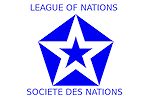
Genf (Schweiz): Erste Weltwirtschaftskonferenz des Völkerbunds. Es nehmen 47 Staaten teil. Keine konkreten Ergebnisse.
1927-05-11

Der kommunistische Agitator Hanming Huang (黃) wird arrestiert und nach China ausgeschafft. Er war von den Kommunisten Chinas nach Siam geschickt worden, um dort eine kommunistische Partei zu organisieren. Dazu diente vor allem die chinesische Geheimgesellschaft Ang Yee Society. Siam wird vermehrt von kommunistischen Agitatoren aus China, Java und Indochina besucht, die unter den Chinesen Siams Anhänger suchen.
1927-05-14


Greene an das US-Außenministerium
"... that the present situation in so far as Moscow was concerned was about as follows. Siam was an Asiatic country with an Asiatic Government and Asiatic people. There was not the slightest indication that communism could or would make any headway with the Siamese and even if it did, Siam was a small and unimportant country in world affairs so that any real effort on the part of Moscow would scarcely justify itself. The object and the aim of the Communists therefore was to use Siam as a sort of neutral base from which to carry on activities in southeastern Asia. Three western powers possessed important colonies in the vicinity of Siam, Burma and India to the west, French Indo-China to the east and the Dutch East Indies to the south, and in his opinion it was at these that the activities of Moscow were really aimed. Prince Traidos [พระวรวงศ์เธอ พระองค์เจ้าไตรทศประพันธ์ กรมหมื่นเทววงศ์วโรทัย, 1883 - 1943] said that in the reports received from the Siamese Legation in Paris, it had been clearly indicated that the Soviet had felt it necessary to increase its activities in south eastern Asia, and to have a center from which to base its work. What more logical than that Siam should constitute that center, where the Bolsheviks doubtless hoped to have more freedom of action than could be hoped for in one of the colonies of the great powers whose organization for protecting itself against communist activity must necessarily be greater than that of Siam." [Zitiert in: Batson, Benjamin Arthur <1942 - >: The end of the absolute monarchy in Siam. -- Singapore : Oxford Univ. Pr., 1984. -- 349 S. : Ill. ; 22 cm. -- (Southeast Asia publications series ; no. 10). -- ISBN 0-19-582612-4. -- S. 170]
1927-06
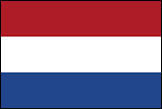
Bangkok: Tan Malaka (1897 - 1949), Djamaludin Tamin (1900 - ) und Subakat gründen die Partai Republik Indonesia. Tan Malaka ist 1926-12 - 1927-08 in Bangkok im Exil.
Abb.: Einbandtitel
[Fair use]
"Tan Malaka (* 2. Juni 1897 in Suliki, Westsumatra; † 21. Februar 1949 in Kediri, Ost-Java) war ein indonesischer Lehrer und Schriftsteller, kommunistischer Philosoph, sowie antikolonialer Denker und nationalistischer Aktivist gegen die Kolonialregierung in Niederländisch-Indien." [Quelle: http://de.wikipedia.org/wiki/Tan_Malaka. -- Zugriff am 2015-01-25]
"In December 1926 Malaka went to Bangkok. There he studied the defeat of PKI. Malaka, along with Djamaludin Tamin and Subakat, established Partai Republik Indonesia (PARI) in early June 1927, distancing himself from the Comintern as well as, in the new party's manifesto, criticizing the PKI (Partai Komunis Indonesia). While PARI did have a small membership inside the country, it never grew to be a large organization; however, with the PKI gone underground, it was the only organization in the late 1920s that was publicly calling for immediate independence for Indonesia. Some of party cadres were Adam Malik (1917 - 1984), Chairul Saleh (1916 - 1967), Mohammad Yamin (1903 - 1962), and Iwa Koesoemasoemantri (1899 - 1971). Malaka went back to the Philippines in August 1927. The Dutch wanted to expel Malaka to Digul concentration camp, and asked the authorities to arrest him. On 12 August 1927, Malaka was arrested on charges entering illegally the Philippines territory. Dr. San Jose Abad helped him in the court; however, Malaka just accepted the verdict that he will be deported to Amoy (Xiamen - 廈門市) , China. In Amoy, he was waited by the Dutch, but he managed to escape by jumping from the ship, and stayed in Sionching village. Malaka then traveled to Shanghai (上海) in the end of 1929. Poeze writes that Malaka might meet Alimin (Alimin bin Prawirodirdjo (1889 - 1964) there in August 1931, and made an agreement with him that Malaka would be working again for the Comintern. Malaka moved Shanghai in September 1932 after the attack made by the Japanese forces, and decided to go to India, disguised as a Chinese-Filipino and using an alias. When he was in Hong Kong (香港) in early October 1932, he was arrested by British officials from Singapore, and was detained for several months. He hoped to have a chance to argue his case under British law, and possibly seek asylum in the United Kingdom, but after several months of interrogation and being moved between the "European" and the "Chinese" sections of the jail, it was decided that he would simply be exiled from Hong Kong without charges. He was then deported again to Amoy." [Quelle: http://en.wikipedia.org/wiki/Tan_Malaka. -- Zugriff am 2015-01-25]
1927-06-03 - 1930-10-20

Sir Hugh Charles Clifford (1866 – 1941) ist British High Commissioner in Malaya
Abb.: Sir Hugh Charles Clifford
[Bildquelle: Wikimedia. -- Public domain]
1927-06-23
Jungfernflug des ersten Bombers Baripatra (บริพัตร). Der Bomber wurde von Lieutenant Colonel Luang Vejayanrangsrit (หลวงเวชยันต์รังสฤษฏ์ = Munee Mahasantana - มุนี มหาสันทนะ, 1893 - 1985) entwickelt und in den Royal Siamese Air Force Aeronautical Workshops gebaut. Es werden insgesamt weniger als 12 Exemplare gebaut.
Abb.: Baripatra (บริพัตร)
[Bildquelle: Wikipedia. -- Keine weiteren Angaben]
Abb.: Abb.: Baripatra (บริพัตร)
[Bildquelle: http://www.rtaf.mi.th/MUSEUM/RTAF%202453-2470En.pdf. -- Zugriff am 2013-11-18]
"The Baribatra (Thai: บริพัตร, also spelled Boripatra or Boriphat) or Bomber Type 2 was a two-seater bomber aircraft of the 1920s designed and built by the Royal Siamese Air Force's Aeronautical Workshops. A small number were built for the Thai Air Force, with the type being the first Thai-designed aircraft. Design and development
The standard bomber aircraft of the Royal Siamese Air Service in the 1920s was the Breguet 14, which was license-built by the Air Service's Aeronautical Workshops as the Bomber Type 1 at Don Muang, powered by surplus 300 hp (224 kW) Renault engines purchased from France. In 1927, the price of Renault engines was raised by the supplier, and it was decided to investigate fitting the Breguets with alternative engines. In order to investigate the characteristics of possible engines, it was decided to build a test bed aircraft, which might also act as a replacement for the Breguet.[1] Design of the new aircraft, designated Bomber Type 2, was assigned to Major Luang Vejayanrangsrit (Luang Vejayanrangsrit (หลวงเวชยันต์รังสฤษฏ์, 1893 - 1985), the assistant director of the Aeronautical Workshops, and later commander of the Royal Siamese Air Force.[1]
The Bomber Type Two was a conventional single-bay biplane of mixed construction, with a steel-tube fuselage structure. The forward fuselage was covered by metal panels and the rear fuselage fabric covering, while the wings had a fabric covered wooden structure (using local wood). The construction of the first prototype, powered by a 450 hp (336 kW) Bristol Jupiter radial engine, began on April 5, 1927, with it making its maiden flight on June 23, 1927.[1]
Shortly after the first flight, the aircraft was named Boripatra (pronounced Boripat) by King Prajadhipok after his half brother, Prince Paribatra Sukhumbhand (สมเด็จพระเจ้าบรมวงศ์เธอ เจ้าฟ้าบริพัตรสุขุมพันธุ์ กรมพระนครสวรรค์วรพินิต, 1891 - 1944), the then Minister of Defence.[2]
A second Boripatra flew later that year, with the Jupiter replaced by a 660 hp (492 kW) BMW VI V12 engine. Boripatras were also flown with Curtiss D-12 engines and possibly a Pratt & Whitney Wasp. While the Boripatra had superior performance to the Breguet 14, it did not replace the older aircraft, as the price of Renault engines dropped to its earlier level, allowing the Breguets to continue to be supported.[3] Less than twelve Boripatras were built.[4]
Operational useIn December 1929, three Boripatras set off on a goodwill visit to India. One crashed fatally shortly after setting off, but the other two reached Rangoon on 24 December that year and Calcutta on 28 December. A second aircraft crashed when flying to Allahabad, but the third completed the planned journet to Delhi.[5] A more successful visit was made to Hanoi, French Indochina by two Boripatras during 1930-31.[4] The Boripatra was replaced by the Vought Corsair in the 1930s, with at least one remaining in existence in 1938.[6]
SurvivorsTwo replica Boripatras are displayed at the Royal Thai Air Force Museum (พิพิธภัณฑ์ของกองทัพอากาศ) in Bangkok.[7]"
[Quelle: http://en.wikipedia.org/wiki/Boripatra. -- Zugriff am 2013-05-15]
1927-07
In der Wochenzeitung สยามรีวิว [Siam Review] ersccheint ein Artikel, der zum verbot der Zeitung führt:
"In July 1927 the weekly Sayam Riwiu [สยามรีวิว] (Siam Review) published an article suggesting that change was possible only through the exercise of ‘blood and steel’ and citing the fate of Czar Nicholas II of Russia [Николай I, 1868 - 1918], saying that if he were still alive he would regret having acted too slowly, and that other ruling monarchs should be careful and heed the ‘voice of the people’. The article asserted that all of the Bangkok press, except newspapers controlled or subsidized by the government, were discussing popular rights and the desire for the government to establish a ‘parliament’, then pointed to the degree of political advance even in colonial lands and finally urged ‘the government we love’ to listen to the public will. The king and the cabinet took strong exception to the words ‘blood and steel’ and the discussion of Czar Nicholas, but nonetheless expressed doubts as to whether the existing press laws provided authority to suppress the publication. It was suggested that the case be taken to court, since if the government lost the case it would have an argument for drafting a stronger press law, while if the government won, other papers would be more careful in their choice of language. However, in the end the cabinet agreed to shut down the Sayam Riwiu press directly rather than go through legal proceedings.
Another unusual article in the same issue of Sayam Riwiu argued the benefits of representative government by citing the case of the United States. The United States, it was said, had obtained its freedom from England at about the same time that Siam had re-established its independence following the Burmese conquest of Ayutthaya, and both countries were well endowed with resources. Why then had the United States progressed so much more rapidly than Siam? Because, it was concluded, of the different systems of government prevailing in the two countries: representative institutions in the United States, and in Siam absolute monarchy, which resulted in a gulf between the government and the people."
[Quelle: Batson, Benjamin Arthur <1942 - >: The end of the absolute monarchy in Siam. -- Singapore : Oxford Univ. Pr., 1984. -- 349 S. : Ill. ; 22 cm. -- (Southeast Asia publications series ; no. 10). -- ISBN 0-19-582612-4. -- S. 142f.]
1927-07-02
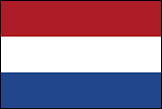
Bangkok: der indonesische antikolonialistisch-kommunistische Agitator Tan Malaka (1897 - 1949) gründet zusammen mit Djamaludin Tamin (1900 - ) und Subakat 1927-07-02 die kommunistische Partai Republik Indonesia (PARI).
1927-07-04

Sukarno (Kusno Sosrodihardjo, 1901 - 1970) und seine Freunde vom Algemeene Studieclub gründen die Partai Nasional Indonesia, eine Kernzelle der indonesischen Unabhängigkeitsbewegung gegen das niederländische Kolonialjoch.
Abb.: Sukarno und seine Kollegen beim Prozess gegen die Partai Nasional Indonesia 1930
[Bildquelle: Wikipedia. -- Public domain]
1927-07-30
Premiere des Films Chok Sorng Chan (โชคสองชั้น, Double Luck). Dies ist der erste thailändische Spielfilm. Filmemacher: Manit Wasuwat (มานิต วสุวัต).
Abb.: Prospekt
[Bildquelle: th.Wikipedia. -- Fair use]
Abb.: Plakat
[Fair use]
1927-08
Bericht des Komitees zur Formulierung eines Gesetzes zur Untertdrückung von "Communism, Bolshevism, and other dangerous propaganda". Dem Komitee gehören an
Raymond Bartlett Stevens (1874 – 1942), US Berater für Außenpolitik
Prinz Boworadet (พลเอก พระวรวงศ์เธอ พระองค์เจ้าบวรเดช, 1877 - 1953)
René Guyon (aka. Pichan Bulayong - พิชาญ บุลยง, 1876 - 1963), französischer Berater im Justizministerium
Phraya Thepwithun (พระยา เทพวิทุรพหุลศรุตาบดี, 1889 - 1949) , Justizministerium
"However the Committee were of the opinion that new legislation should not be confined merely to the suppression of those doctrines and theories which are inherently connected with violence and revolution. There is another danger in Siam, to wit: unwise and premature agitation for changes in the form of government. In the process of time there may be a general desire for some form of popular participation in government or some restraint upon the power of the sovereign. The great bulk of the people of Siam however are as yet not trained in political or economic thought. There is not now nor will there be for a considerable time to come any possibility of any fundamental change in the Government of Siam. There is a danger accordingly that agitation of a political nature would lead to unrest and possibly premature attempts to secure some changes in the constitution of the country. This question presents real difficulties." [Zitiert in: Batson, Benjamin Arthur <1942 - >: The end of the absolute monarchy in Siam. -- Singapore : Oxford Univ. Pr., 1984. -- 349 S. : Ill. ; 22 cm. -- (Southeast Asia publications series ; no. 10). -- ISBN 0-19-582612-4. -- S. 147]
1927-08-01 - 1936-12-22 ; 1946-03-31 - 1950-05-01


Chinesischer Bürgerkrieg zwischen Kuomintang (中國國民黨) und und der kommunistischen Partei Chinas (中國共產黨). Der Bürgerkrieg spaltet die Chinesen Siams. In Siam überwiegt die Propaganda des Kuomintang, Siam verweist Chinesen wegen kommunistischer Tätigkeit des Landes.
1927-08-09 - 1941-04-24
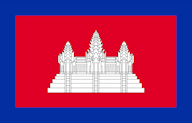
Sisowath Monivong (ព្រះបាទ ស៊ីសុវតិ្ថ មុនីវង្ស, 185 - 1941) ist König von Kambodscha.
Abb.: Sisowath Monivong (ព្រះបាទ ស៊ីសុវតិ្ថ មុនីវង្ស)
1927-09

Offizieller Besuch von Mitgliedern des Königshauses in Australien.
Abb.: Besuch in Brisbane (Queensland), 1927-09-12
"Back row, standing, left to right: Lt. Col. Neil Campbell; Princess Mayura-Statra, daughter of H.R.H. Prince Purachatra; private secretary to H.R.H. Prince Purachatra; Enid Campbell; Major Cecil Wolff. Seated left to right: Governor Sir John Goodwin; H.R.H. Princess Purachatra ; Prince Purachatra of Siam [Kambaeng Bejra,Thailand, พระเจ้าบรมวงศ์เธอ พระองค์เจ้าบุรฉัตรไชยากร กรมพระกำแพงเพ็ชรอัครโยธิน; 1881 – 1936] and Lady Goodwin.
[Bildquelle: Wikimedia. -- Public domain]
Abb.: Lage von Brisbane
[Bildquelle: OpenStreetMap. -- Creative Commons Lizenz (Namensnennung, share alike)]
1927-09
Zusatz zum Strafgesetzbuch: Verbot der Verbreitung von politischen oder ökonomischen Lehren, die das Volk zu Hass gegen Monarchie oder Regierung bewegen könnten, zur Störung der öffentlichen Ordnung, zu Umsturz, Klassenhass oder dergleichen aufrufen. Faktisch ist es ein Anti-Kommunisten-Gesetz.
1927-09-13


Der britische Gesandte Sydney Philip Perigal Waterlow (1878 - 1944) ans Foreign Office:
"In more serious matters His Majesty seems to be shaping [up] well. One theory is that the ‘poor little King’ is a nonentity immobilized at the center of a triangle of forces represented by his three most powerful uncles—
- Prince Bhanurangsi [สมเด็จพระเจ้าบรมวงศ์เธอ เจ้าฟ้าภาณุรังษีสว่างวงศ์ กรมพระยาภาณุพันธุวงศ์วรเดช, 1859 – 1928], the head of the family, who is supreme in all family matters,
- the Prince of Nagor Svarga [Boriphat] [สมเด็จพระเจ้าบรมวงศ์ เธอ เจ้าฟ้าบริพัตรสุขุมพันธุ์ กรมพระนครสวรรค์วรพินิต, 1881 - 1944] who carries most weight on all larger political issues,
- and Prince Chantaburi [พระเจ้าบรมวงศ์เธอ พระองค์เจ้ากิติยากรวรลักษณ์ กรมพระจันทบุรีนฤนาถ, 1874 – 1931] who has the civil service in his pocket.
But I incline to disbelieve this. His Chief Aide-de-Camp and Private Secretary, Prince Amoradat [หม่อมเจ้าอมรทัต กฤดากร, 1886 - 1952], a man of considerable intelligence with whom I am on terms of close intimacy, assures me that His Majesty has a will and opinion of his own, is determined not be a mere figurehead, and in taking important decisions often sets aside, and usually rightly, the advice offered him. True, he is going slow and has little self-confidence as yet; but that is a sign of wisdom in view of his lack of experience, and meanwhile he is immensely conscientious. I know of no facts to make me suspect the accuracy of this account, which may however be coloured by the enthusiasm of a courtier."
[Zitiert in: Batson, Benjamin Arthur <1942 - >: The end of the absolute monarchy in Siam. -- Singapore : Oxford Univ. Pr., 1984. -- 349 S. : Ill. ; 22 cm. -- (Southeast Asia publications series ; no. 10). -- ISBN 0-19-582612-4. -- S. 53]
Abb.: Amoradat Kritakara [หม่อมเจ้าอมรทัต กฤดากร, 1886 - 1952]
[Bildquelle: th.Wikipedia. -- Public domain]
1927-09-21

Beginn des Baus des Klai Kangwon Palasts (วังไกลกังวล) in Hua Hin (หัวหิน).
Abb.: Lage von Hua Hin (หัวหิน)
[Bildquelle: OpenStreetMap. -- Creative Commons Lizenz (Namensnennung, share alike)]
Abb.: Klai Kangwon Palast (วังไกลกังวล), Hua Hin (หัวหิน)
[Bildquelle: ©Google earth. -- Zugriff am 2012-03-38]
"Der Wang Klai Kangwon (Thai: วังไกลกังวล, Deutsch etwa: Fern-von-Sorgen-Palast) ist ein königlicher Palast in Hua Hin (หัวหิน), Provinz Prachuap Khiri Khan (ประจวบคีรีขันธ์), im südlichen Teil der Zentralregion von Thailand. Baugeschichte
Prinz Itthithepsan Kritakara, (หม่อมเจ้า อิทธิเทพสรรค์ กฤดากร, 1889 - 1934), der an der École des Beaux-Arts studiert hatte, bekam von König Prajadhipok (Rama VII.) den Auftrag, für ihn und seine Königin Rambhai Barni (รำไพพรรณี, 1904 - 1984) einen Sommerpalast zu entwerfen. Vorbereitungen für den Bau vor Ort begannen im Jahr 1926, der eigentliche Bau begann am 21. September 1927. Am 10. April 1929 wurde die Einweihung der zuerst fertiggestellten Villa gefeiert. Weitere Gebäude wurden nach und nach bis 1933 hinzugefügt.
PalastanlageDa der Klai-Kangwon-Palast als Sommerresidenz gebaut wurde, gibt es hier keine Thronhallen, in denen Audienzen abgehalten werden könnten. Da der König keine Nebenfrauen hatte, gab es auch keine Notwendigkeit, die traditionelle Trennung zwischen einem Trakt für die Frauen und einen separaten Trakt für die Männer aufrechtzuerhalten. Statt dessen gibt es nur einen königlichen Wohnbereich und Unterkünfte für das Gefolge.
Zunächst bestand der Palast aus drei Villen: die Phra Tamnak Piamsuk (Thai: พระตำหนักเปี่ยมสุข), die Tamnak Plukkasem (Thai: พระตำหนักปลุกเกษม) und die Tamnak Noi (Thai: พระตำหนักน้อย). Zusätzlich gab es einige Nebengebäude für das Gefolge sowie einen Mehrzweck-Pavillon, dem Sala Roeng (Thai: ศาลาเริง), in dem der König private Feste feierte. Die drei Villen waren zum Meer hin ausgerichtet, die größte, die Tamnak Piamsuk, lag in der Mitte, nach Süden lag Tamnak Noi in einem großen Innenhof. Die nördliche Tamnak Plukkasem lag etwas zurück. Während die drei Villen jeweils dreistöckig aufgebaut waren, hatten die Nebengebäude nur ein Stockwerk.
Da der Architekt in einem westlichen Land studiert hatte, ist der Baustil aller Gebäude eher westlich als Thai, es wurden jedoch Zugeständnisse an das heiße Klima gemacht. Die Dachformen der Gebäude, die Ausgestaltung Innenhöfe, sowie die große Terrasse mit Pergola erinnern an große Landhäuser in Spanien, die Baumaterialien stammen aus der Umgebung.
Der derzeitige König Bhumibol Adulyadej (Rama IX.) beauftragte für Prinzessin Maha Chakri Sirindhorn (มหาจักรีสิรินธร, 1955 - ) eine zusätzliche Villa, die im gleichen Stil wie die ursprünglichen Gebäude von König Prajadhipok erbaut wurde.
Nutzung des PalastesObwohl der Name des Palastes „Fern-von-Sorgen“ war, wurde König Prajadhipok – gerade als er hier im Sommerpalast residierte – über die Revolution von 1932 in Bangkok informiert, als die absolute zu einer konstitutionellen Monarchie abgeändert worden war. Der König dankte kurze Zeit später ab und zog nach England, wo er 1941 starb.
Der derzeitige König Bhumibol Adulyadej und seine Königin Sirikit Kitiyakara residierten oft und gerne im Klai-Kangwon-Palast. Während ihrer Regierungszeit wurde das Palastgelände vergrößert sowie einige zusätzliche Gebäude errichtet. Wenn niemand von der königlichen Familie anwesend ist, ist das Palastgelände für die Allgemeinheit geöffnet.
Literatur
- Naengnoi Suksri: Palaces of Bangkok: Royal Residences of the Chakri Dynasty. Thames & Hudson Ltd., London 1996, ISBN 978-0500974469
- Clarence Aasen: Architecture of Siam. Oxford University Press 1998, ISBN 983-56-0027-9"
[Quelle: http://de.wikipedia.org/wiki/Wang_Klai_Kangwon. -- Zugriff am 2012-03-28]
1927-10

Der deutsche Geograf Wilhelm Credner (1892 - 1948) bricht zu einer eineinhalbjährigen Forschungsreise durch Siam auf.
1927-10-01

Stapellauf von SS California. Es ist das erste Ozean-Passagierschiff mit turboelektrischem Antrieb.
Abb.: SS California oder eines ihrer Schwesterschiffe
[Bildquelle: Boston Public Library. -- http://www.flickr.com/photos/boston_public_library/7136909247/. -- Zugriff am 2013-06-26. -- Creative Commons Lizenz (Namensnennung)]
1927-10-06

USA: Premiere des Tonfilms The Jazz Singer von Alan Crosland (1894 - 1936). Es ist der erste echte Tonfilm: er enthält einen 250 Worte umfassenden Monolog.. Das Zeitalter des Tonfilms beginnt.
Abb.: Plakat
[Bildquelle: Wikipedia. -- Public domain][Quelle der .ogg-Datei: Wikipedia. -- Fair use]
1927-11

Es erscheint:
Sayre, Francis Bowes <1885 - 1972>: Siam's fight for sovereignty. -- In. Atlantic Monthly. -- 1927-11. -- S. 674 - 689
"Troublous constitutional problems still remain. His Majesty keenly appreciates the difficulties and dangers of absolute monarchy; he has a sincere desire to democratize the government and to shift part of its responsibilities to the shoulders of the people. But a parliament uncontrolled by an intelligent and interested electorate is a far more dangerous engine of tyranny than an absolute monarch; and, until the groundwork can be built by pushing forward the work of general education, the parliamentary form of government must wait. Programmes, nevertheless, can be formulated looking toward this goal; and in the meantime the King is hoping to develop the people’s political experience by creating popularly elected municipal councils in some of the larger cities." [Zitiert in: Batson, Benjamin Arthur <1942 - >: The end of the absolute monarchy in Siam. -- Singapore : Oxford Univ. Pr., 1984. -- 349 S. : Ill. ; 22 cm. -- (Southeast Asia publications series ; no. 10). -- ISBN 0-19-582612-4. -- S. 301f., Anm. 5]
1927-11-15

Der Weiße Elefant (ช้างเผือก) kommt in Bangkok an.
Pl. XLIII: The White Elefphant of the present Reign"The White Elephant for the present reign (Pl. XLIII) was born in captivity in 1926, its mother being one of the elephants of the Borneo Company’s herd, employed in the extraction of teak, so its appearance was not of a very romantic nature. It was presented to the King by the Company, and the mother was lent until such time as its distinguished offspring should be weaned. The two elephants were brought down from the North in a specially constructed railway carriage, supplied with electric fan and shower-bath, and made several stops of two or three days’ duration en route, in order to give the animals a chance to rest, and to give the people of some of the provincial towns an opportunity to pay homage and enjoy the festivities arranged by the provincial governors to commemorate the auspicious occasion. At each stopping place the elephants were led to a specially erected sala [สาลา], where a chapter of monks intoned appropriate stanzas, and at night the populace were regaled with theatrical performances. At the last stopping-place, Pan Pah In [Bang Pa-In, บางปะอิน], a few hours’ journey by rail from Bangkok, and the seat of the King’s summer palace, the animals arrived on 12th November, 1927, and the King, in accordance with ancient custom, made the journey up-river by launch to meet them. After inspecting them the King returned to Bangkok by water.
Abb.: Lage von Bang Pa-In
[Bildquelle: OpenStreetMap. -- Creative Commons Lizenz (Namensnennung, share alike)]On the 15th the train bearing the elephants arrived at the royal station at Bangkok. As they were detrained a chapter of monks chanted stanzas, and the animals then took their place in the elaborate procession which had been organized for the occasion. The route which the procession took from the railway station was lined with masses of people all eager to get a view of the unusual sight; but it was certainly only curiosity that inspired them, and not religious awe.
Abb.: Lage des Tusita Park [ดุสิตปาร์ค]
[Bildquelle: OpenStreetMap. -- Creative Commons Lizenz (Namensnennung, share alike)]The procession entered the Tusita Park [ดุสิตปาร์ค, jetzt: Dusit Zoo] where the elephant stable is situated. I have called it a stable, but it is more properly designated a brah-di-nan [พระทีนัง] or palace, and it is certainly built in the traditional style of Siamese temple or palace architecture. The procession was a pageant rather than a state procession in the usual sense. On its way to the stable it filed past pavilions accommodating the King and Queen, the Royal Family, and officials. Except for the bearers of ceremonial weapons and standards, and those in charge of the young elephant, its mother, and the White Elephant of the sixth reign (PI. XLIV), the procession was made up entirely of girls mostly drawn from the ranks of the official classes. There were companies of girls dressed in the costumes of various foreign countries, others dressed to represent flowers, while others were mounted and armed with breastplates and lances to represent the amazons of ancient days. There were companies of dancers, and the masked actors of the Ramayana [रामायण / รามเกียรติ์] also passed in review. The elephants having reached their station, the various troupes of actors and acrobats, whose stages were erected in different parts of the park, began to perform, ostensibly for the benefit of the White Elephant, but perhaps it would be more truthful to say for the amusement of the general public, who were allowed free access to this royal park on the evenings of the three days during which the celebrations lasted. Meanwhile, in the elephant "palace", as soon as the animals had entered it, a chapter of Buddhist monks intoned formulae, while the Brahmans also performed their rites in a special pavilion.
Next morning (16th), the White Elephant was bathed, and the King arrived to take part in the anointing ceremony. Having lit the candles of worship before an image of the Buddha, the King awaited the auspicious moment of nine hours, twenty-six minutes and twenty-four seconds. The young elephant, who was extremely playful and appeared to have no respect for the ceremonies, was securely tied to upright posts on the inside of the enclosed platform, and the King mounted a dais on the outside of the rail. At the auspicious moment the Head Brahman struck the gong of victory, while other Brahmans blew conches, the monks began to recite stanzas of victory, and the King anointed the White Elephant (Pl. XLV). He also fed it with red sugar-cane on which had been inscribed the name by which the animal was to be known, in future, viz. Brah Savetra Gajedejna Dilok; together with a string of titles somewhat similar to those taken by the King at the time of his coronation, i.e. honorific epithets of a kind appropriate either to a King or to a noble White Elephant.
The elder members of the Royal Family also took part in the anointment followed by the Brahmans. The officials of the Elephant Department then dressed the White Elephant in full state, with the insignia of the rank of Brahya Jan [พระยาช้าง] ; and a golden cord was placed round its neck to signify that the khvan [ขวัญ] (spirit) of a Brahya Jan [พระยาช้าง] was being retained. Miniature trees were placed at the four corners of the platform on which the elephants stood. Food was presented to the monks who had officiated, and the King conferred promotion and reward upon those who had been connected with the White Elephant and attended it hitherto. It is obvious that the above ceremonies must be considered in the light of a form of abhiseka [अभिषेक / อภิเษก] the King anointing the White Elephant and conferring upon it a style and title. Possibly the feeding of the animal with red sugar-cane is a relic of the sacrament which accompanies coronation ceremonies in many countries, but of which we have been unable to find any trace in the Siamese Rajabhiseka [ราชาภิเษก]. The mention of the retention of the khvan [ขวัญ] is remarkable, and suggests that the form of abhiseka [อภิเษก], which the ceremonies represent, is rather an initiation than a coronation."
[Quelle: Wales, H. G. Quaritch (Horace Geoffrey Quaritch) <1900 - 1981>: Siamese state ceremonies : their history and function. -- London : Quaritch, 1931. -- 326 S. : Ill. ; 25 cm.. -- S. 273 - 276]
1927-11-30

Erste Sitzung des neu gebildeten Committee of the Privy Council. Aus den über 200 Mitgliedern des Privy Council wird ein Committee von 40 Adligen gebildet.
1927-12

In Japan wird eine Siam Society (暹羅協会) gegründet. 14 Mitglieder (Geschäftsleute und Beamte). Vorsitz: Prinz Chichibu ((秩父宮雍仁親王, 1902 - 1953).
1927-12
Memorandum von Prinz Traidos Prabandh (พระวรวงศ์เธอ พระองค์เจ้าไตรทศประพันธ์ กรมหมื่นเทววงศ์วโรทัย, 1883 - 1943) und Raymond Bartlett Stevens (1874 – 1942), US-Berater für Außenpolitik, zur staatlichen Subvention der drei Zeitungen:
- Bangkok Times
- Bangkok Daily Mail
- Siam Observer
- หนังสือพิมพ์ไทย
"The reason for the subsidy was the desire of the government to control the policy of the paper. There was ample justification for this policy at the time it was adopted. All of these papers were published in English and undoubtedly had influence among the foreign population At that time our foreign relations were difficult. The old treaties were still in effect; and newspapers by adverse criticism would create difficulty and trouble for His Majesty’s Government. " [Zitiert in: Batson, Benjamin Arthur <1942 - >: The end of the absolute monarchy in Siam. -- Singapore : Oxford Univ. Pr., 1984. -- 349 S. : Ill. ; 22 cm. -- (Southeast Asia publications series ; no. 10). -- ISBN 0-19-582612-4. -- S. 74]
Das Memorandum empfiehlt, die Subventionen zu streichen. Das führt dazu, dass die Regierung die Subskriptionen für Bangkok Times und Siam Observer so erhöht, dass der Subskriptionspreis die bisherige Subvention ausmacht.. Der Herausgeber der Bangkok Daily Mail, Louis Girivat, verzichtet auf jede offene oder versteckte Subvention.
1927-12

Es erscheint:
Abb.: Frankreichs Mühen in Indochina
1927-12-02

Beginn des Verkaufs von Ford Model A. Bis 1931 werden fast 5 Mio. Stück produziert.
Abb.: Ford Model A Standard 1927
[Bildquelle: Alf van Beem / Wikimedia. -- Public domain]
1927-12-05 8:45


Geburt des späteren Königs Bhumibol Adulyadej im Fiske Building des Cambridge Hospital (heute: Mount Auburn Hospital) in Cambridge, Mass., USA. Er wiegt bei der Geburt 6 Pfund.
Abb.: Lage von Cambridge, Mass., USA
[Bildquelle: OpenStreetMap. -- Creative Commons Lizenz (Namensnennung, share alike)]
Abb.: Lage des Cambridge Hospital
[Bildquelle: OpenStreetMap. -- Creative Commons Lizenz (Namensnennung, share alike)]Wohnadresse des zukünftigen Königs: ein Appartement mit sechs Räumen in 63, Longwood Avenue, Brookline, Norfolk County, Massachusetts
Abb.: Lage von 63, Longwood Avenue, Brookline, Norfolk County, Massachusetts
[Bildquelle: OpenStreetMap. -- Creative Commons Lizenz (Namensnennung, share alike)]
1927-12-08

Eröffnung eines Generalkonsulats Siams in München
1927-12-11
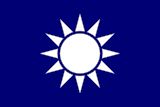
Kommunistenaufstand in Kanton (廣州起義). Wird vom Kuomintang niedergeschlagen. Daraufhin fliehen viele chinesische Kommunisten nach Südostasien. Bis 1929 fliehen über 30 hochrangige Kommunistenkader nach Siam. Sie finden Arbeit als Lehrer in chinesischen Schulen aund als Arbeiter in chinesischen Sägewerken.
"The Guangzhou Uprising (simplified Chinese: 广州起义; traditional Chinese: 廣州起義; pinyin: Gǔangzhōu Qǐyì) of 1927 was a failed Communist uprising in the city of Guangzhou (廣州) in southern China. On December 11, 1927, Red Guard citizens, directed by Communist political leaders, took over Guangzhou (then known as Canton in English). The uprising occurred despite the strong objections of Communist military commanders such as Ye Ting (葉挺, 1896 - 1946), Ye Jianying (葉劍英, 1897 - 1986) and Xu Xiangqian (徐向前, 1901 - 19190). Using the element of surprise, rebel forces took over most of the city within hours, despite a huge numerical and technical advantage held by government troops. The Communist leaders officially renamed the city's political structure "Guangzhou Soviet". However, the uprising was quickly crushed by warlord armies. Zhang Tailei, the leading Red Guard organizer, was killed in an ambush as he returned from a meeting. The takeover dissolved by the early morning of December 13, 1927.
In the resulting purges, many young Communists were killed, and the Guangzhou Soviet became known as the "Guangzhou Commune" or "Paris Commune of the East"; it lasted only a short time at the cost of more than 5,000 Communists dead and an equal number missing. Ye Ting, the military commander, was scapegoated, purged and blamed for the failure, despite the fact that the obvious disadvantage of the Communist force was the main cause of the defeat, as Ye Ting and other military commanders had correctly pointed out. Enraged by his unjustified treatment, Ye Ting left China and went into exile in Europe, not returning until nearly a decade later.
Despite being the third failed uprising of 1927, it encouraged further uprisings across China."
[Quelle: https://en.wikipedia.org/wiki/Guangzhou_Uprising. -- Zugriff am 2015-06-25]
1927-12-24

Eröffnung eines Generalkonsulats Siams in Stuttgart. Das Konsulat wird 1930-09-30 aus finanziellen Gründen geschlossen.
1928-01
Bergpfade zwischen Phitsanulok (พิษณุโลก) und Lomsak (หล่มสัก)
Abb.: Lage von Phitsanulok (พิษณุโลก) und Lomsak (หล่มสัก)
[Bildquelle: OpenStreetMap. -- Creative Commons Lizenz (Namensnennung, share alike)]
Abb.: Bergpfade zwischen Phitsanulok (พิษณุโลก) und Lomsak (หล่มสัก), 1928-01
[Bildquelle: Robbins, L. J.: Hill routes between Pitsanuloke and Lomsak. -- In: Journal of the Siam Society. -- 22,2 (1928). -- Vor S. 81]
Abb.: Ein Teilstück eines Pfades an der Ostseite des Khao Krayang (เขากระยาง), 1928-01
[a.a.O., nach S. 84]
1928-01-12

Deutsch-siamesischer Herrenabend in der deutschen Gesandtschaft. 60 Teilnehmer, je zur Hälfte Siamesen bzw. Deutsche.
1928-01-31
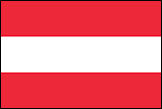
Der österreichische Ingenieur Fritz Pfleumer (1881 - 1945) lässt das Magnet-Tonband patentieren. Im gleichen Jahr stellt er den Prototyp eines Magnet-Tonbandgerätes her.
1928-02-08

Eröffnung eines Generalkonsulats Siams in Köln
1928-02-15

Zwei in Deutschland ausgebildete Oberstleutnante kommen nach Deutschland, wo sie sich im Auftrag der siamesischen Regierung über Luftschutz, Gasschutz, Nachschub von Munition und Verpflegung sowie die Organisation des Militärwesens oroientieren sollen. Nach 15 Monaten in Deutschland sollen sie 15 Monate lang in Frankreich, Belgien, Großbritannien, USA und Japan die dortigen diesbezüglichen Zustände vergleichen. So soll die Grundlage für die Entscheidung geschaffen werden, in welche der genannten Länder Siam Offiziere zur Ausbildung schicken soll.
Deutschland ist von diesem Besuch nicht begeistert:
"Nicht anders als im Fall der Einstellung siamesischer Offiziere in die Reichswehr wurde die sogenannte Informationsreise der zwei siamesischen Offiziere nicht sonderlich vom Auswärtigen Amt begrüßt. Denn, wie das Auswärtige Amt sich in einem Brief an das Reichswehrministerium äußerte, hieß es: „So sehr auch von hier aus die Anbahnung freundschaftlicher Beziehungen zu Siam, insbesondere auf kulturellem und wirtschaftlichem Gebiet, begrüßt wird, und so wenig verkannt wird, dass diese Anbahnung auch durch persönliche Fühlung mit den früher in Deutschland ausgebildeten siamesischen Offizieren leicht gefördert werden könnte, so muss doch betont werden, dass wir uns von einem weitgehenden Entgegenkommen gegenüber der siamesischen Regierung auf militärischem Gebiet für uns selbst keinen Vorteil versprechen können. Unsere politischen Interessen erfordern es viel mehr, dass wir uns militärisch wie politisch auch in Siam möglich desinteressieren und aus allen etwaigen Konfliktsmöglichkeiten im Femen Osten unter allen Umständen herausbleiben".
Doch trotz dieser Ansicht empfahl das Auswärtige Amt in seinem Brief weiter
„Falls die Siames. Regierung jetzt dennoch um die Erlaubnis zur Information der Offiziere auf diplom. Wege nachsuchen und sich keine Möglichkeit bieten sollte, das Ersuchen abzulehnen, ohne dabei die Siam. Reg. zu verletzen, so würde ich schließlich die politischen Bedenken gegen einen kürzeren informatorischen Aufenthalt der beiden siamesischen Offiziere in Deutschland zurückstellen und die Unterstützung des Reichswehrministeriums unter der Voraussetzung erbitten, dass die Information der beiden Herren trotz Wahrung freundschaftlicher Formen in einem wesentlich bescheidenen, im einzelnen noch zu besprechenden Rahmen und möglichst unauffällig durchgeführt wird. Insbesondere sollte hierbei entschieden vermieden werden, auf siamesische Seite den Glauben zu erwecken, dass wir an der Ausbildung siamesischer Offiziere in Deutschland, auch in der Zukunft, Interesse nähmen".
Trotz der zurückhaltenden Einstellung des Auswärtigen Amts wurde es den beiden siamesischen Offizieren - nachdem die siamesische Gesandtschaft in Berlin das Ersuchen auf Erlaubnis für die Informationsreise der beiden Offiziere dem Auswärtigen Amt am 19. März 1928 eingereicht hatte - erlaubt, deutsche militärische Einrichtungen zu besuchen. Laut Major von Hagen vom Wehrministerium seien die siamesischen Offiziere sehr zuvorkommend behandelt worden. Auch würden ihnen weit mehr Wünsche als z.B. den japanischen Offizieren erfüllt, obwohl
„wir doch viel mehr politisches und militärisches Interesse Japan gegenüber als Siam hätten".
Doch was den Siamesen nicht gestattet werden konnte, war die Kommandierung der beiden Offiziere zu den Truppenteilen. Dies habe, so Major von Hagen, mehr oder weniger zur Enttäuschung der beiden Offiziere geführt."
[Quelle: Catthiyakorn Sasitharamas [คัททิยากร ศศิธรามาส]: Die deutsch-thailändischen Beziehungen in der Zeit der Weimarer Republik bis zum Ende des Zweiten Weltkriegs. -- Hamburg : Kovač, 2012. -- 346 S. ; 21 cm. -- (Schriftenreihe Schriften zur Geschichtsforschung des 20. Jahrhunderts ; Bd. 4). -- ISBN 978-3-8300-6361-2. -- Zugl.: Hamburg, Univ., Diss., 2012. -- S. 125f. -- Fair use]
1928-03

Rama VII. zum Vorwurf des britischen Finanzberaters Sir Edward Cook (1881–1955), dass der Haushaltsplan 1928/1929 zu wenig Investitionen enthält:
""I think that the ministers can’t be blamed for this—the fault is my own for not having told them that they could expect money to be available for new ‘schemes’. . .
However, the king added, the Ministry of Finance had not publicized the fact that the new budget would show a substantial surplus, and the various ministries had for years been told that they must keep budgets down to the absolute minimum and that no funds were available for new projects."
[Quelle: Batson, Benjamin Arthur <1942 - >: The end of the absolute monarchy in Siam. -- Singapore : Oxford Univ. Pr., 1984. -- 349 S. : Ill. ; 22 cm. -- (Southeast Asia publications series ; no. 10). -- ISBN 0-19-582612-4. -- S. 95]
ausführlich: http://www.payer.de/thailandchronik/ressourcen.htm
Phongpaichit, Pasuk <ผาสุก พงษ์ไพจิตร, 1946 - > ; Baker, Chris <1948 - >: Thailand : economy and politics. -- Selangor : Oxford Univ. Pr., 1995. -- 449 S. ; 23 cm. -- ISBN 983-56-0024-4. -- Beste Geschichte des modernen Thailand.
Ingram, James C.: Economic change in Thailand 1850 - 1870. -- Stanford : Stanford Univ. Pr., 1971. -- 352 S. ; 23 cm. -- "A new edition of Economic change in Thailand since 1850 with two new chapters on developments since 1950". -- Grundlegend.
Akira, Suehiro [末廣昭] <1951 - >: Capital accumulation in Thailand 1855 - 1985. -- Tokyo : Centre for East Asian Cultural Studies, ©1989. -- 427 S. ; 23 cm. -- ISBN 4896561058. -- Grundlegend.
Skinner, William <1925 - 2008>: Chinese society in Thailand : an analytical history. -- Ithaca, NY : Cornell Univ. Press, 1957. -- 459 S. ; 24 cm. -- Grundlegend.
Mitchell, B. R. (Brian R.): International historical statistics : Africa and Asia. -- London : Macmillan, 1982. -- 761 S. ; 28 cm. -- ISBN 0-333-3163-0
Credner, Wilhelm <1892 - 1948>: Siam das Land der Tai : eine Landeskunde auf Grund eigner Reisen und Forschungen. -- Stuttgart : Engelhorn, 1935. -- 423 S. : Ill.
Landon, Kenneth Perry <1903 - 1993>: Siam in transition : a brief survey of cultural trends in the five years since the revolution of 1932. -- Chicago : Univ. of Chicago Press, 1939. -- 328 S. ; 24 cm.
Barmé, Scot: Woman, man, Bangkok : love, sex, and popular culture in Thailand. -- Lanham : Rowman & Littlefield, 2002. -- 273 S. : Ill. ; 24 cm. -- ISBN 0-7425-0157-4
Thompson, Virgina <1903 - 1990> ; Adloff, Richard: The left wing in Southeast Asia. -- New York : Sloane, 1950. -- Darin: Thailand (Siam). -- S. 51 - 75
Zu Chronik B. E. 2471 / 1928-04 - 1929-03